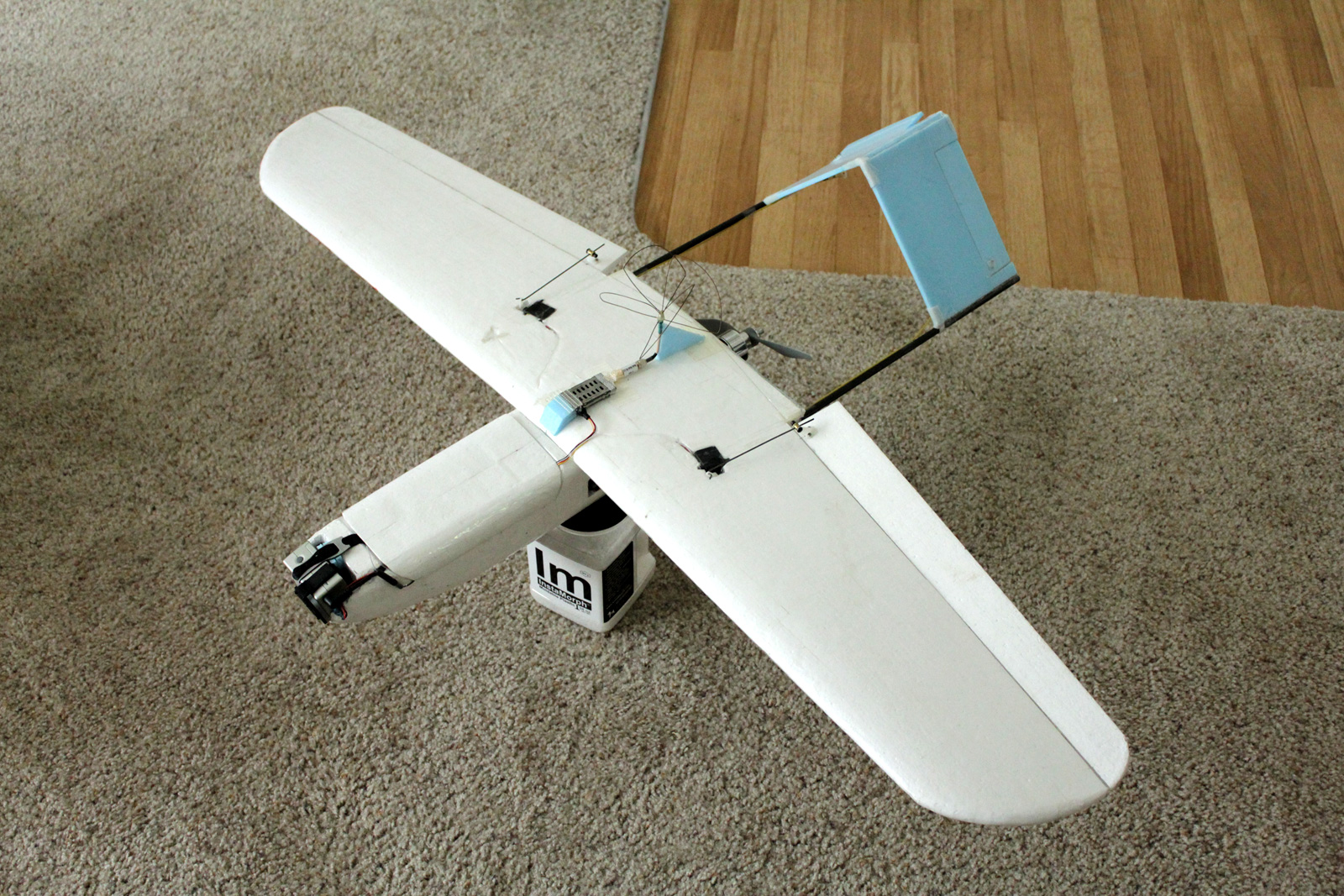
I liked the look of IBCrazy's forward swept Specter but I wanted to have some different features and flight characteristics, so I hot wired an inspired-by variant with custom geometry out of EPS foam with an inverted v-tail. EPS is brittle and doesn't hold up well to crashes, so in order to maintain some strength and rigidity, I used a combination of fiberglass arrow shafts, wood spars, low temp hot glue and various scotch tapes to seal and shell everything. The fuselage was 2x 2" EPS blocks glued together (bay was precut with hot wire hand tools), ran through a jig saw, and shaved with a belt sander (gotta love a buddy with a garage). The ailerons are a bit crazy for this wing, but that's only because they used to be elevons for an Alulah style powered pusher glider (which also flew awesome, but that's for a different article).
Flies like this:
Materials:
- 2" EPS R-type insulafoam from Home Depot
- 3/8" DOW Bluecor (XPS)
- various scotch packing tapes
- 1/4" basswood rods
- fiberglass arrowshafts
- low temp hot glue
Geometry:
Total Length: 32"
Fuselage: 19" long x 4" wide x 3.5" tall
Tail length from end of fuselage: 13"
Nose length from LE: 10.5"
Airfoil: PW51 (1" max thickness)
Total Span: 48"
Inner Chord: 10.75"
Outer Chord: 6.5"
CoG: About 1-1.5" from the LE
Sweep: -2" (-4.5something degrees)
Aileron cuts (used to be elevons): 2" inside inner chord TE narrowing to 1.5"
Rounded tips were cut by stencil and hand sanded.
Boom distance: 10"
v-tail panels: 5" x 7.25"
v-tail control surface length: 1.5"
90 degree anhydral
The motor in the photos turned out to be a touch overkill for the kind of flying that I wanted to do, so I ended up switching the motor out to a Turnigy Park480 1320kv with an 8x6 APC-E.
All up weight: 1.9lbs w/ 2200mah 45C 3S Nanotech
Electronics package listed in the photos.
No OSD or RSSI yet, but it has room inside the fuselage for all of it and possibly an Orange RX3S flight stabilizer for extra windy days.
Overall, EPS gives it an excellent power to glide ratio. It's got tons of roll authority (high speed drill bit status). Flight times range from 12 minutes cruising around, or a boring 50 minutes of endurance testing entirely made up of power climbs and throttle off gliding in high winds.
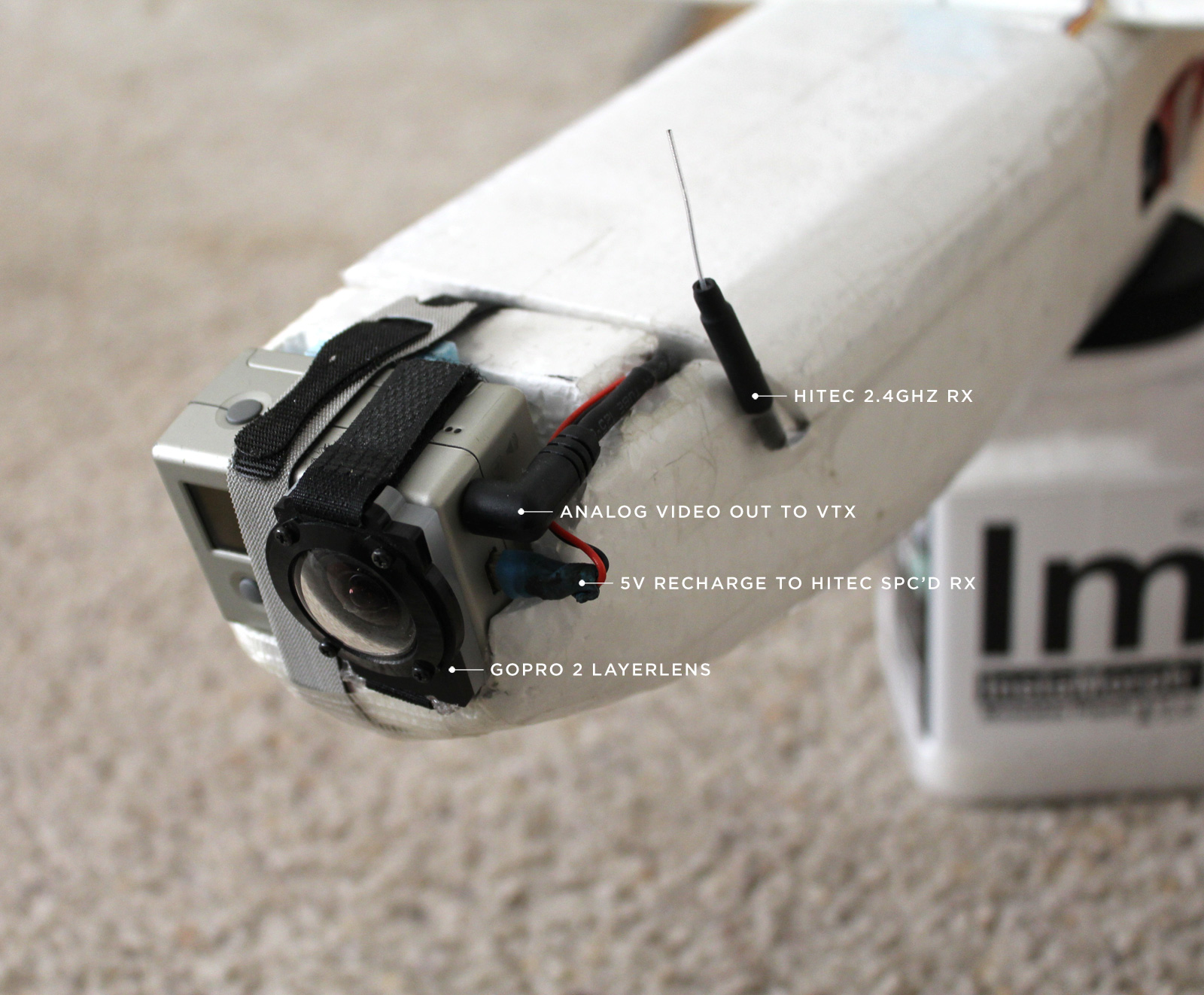
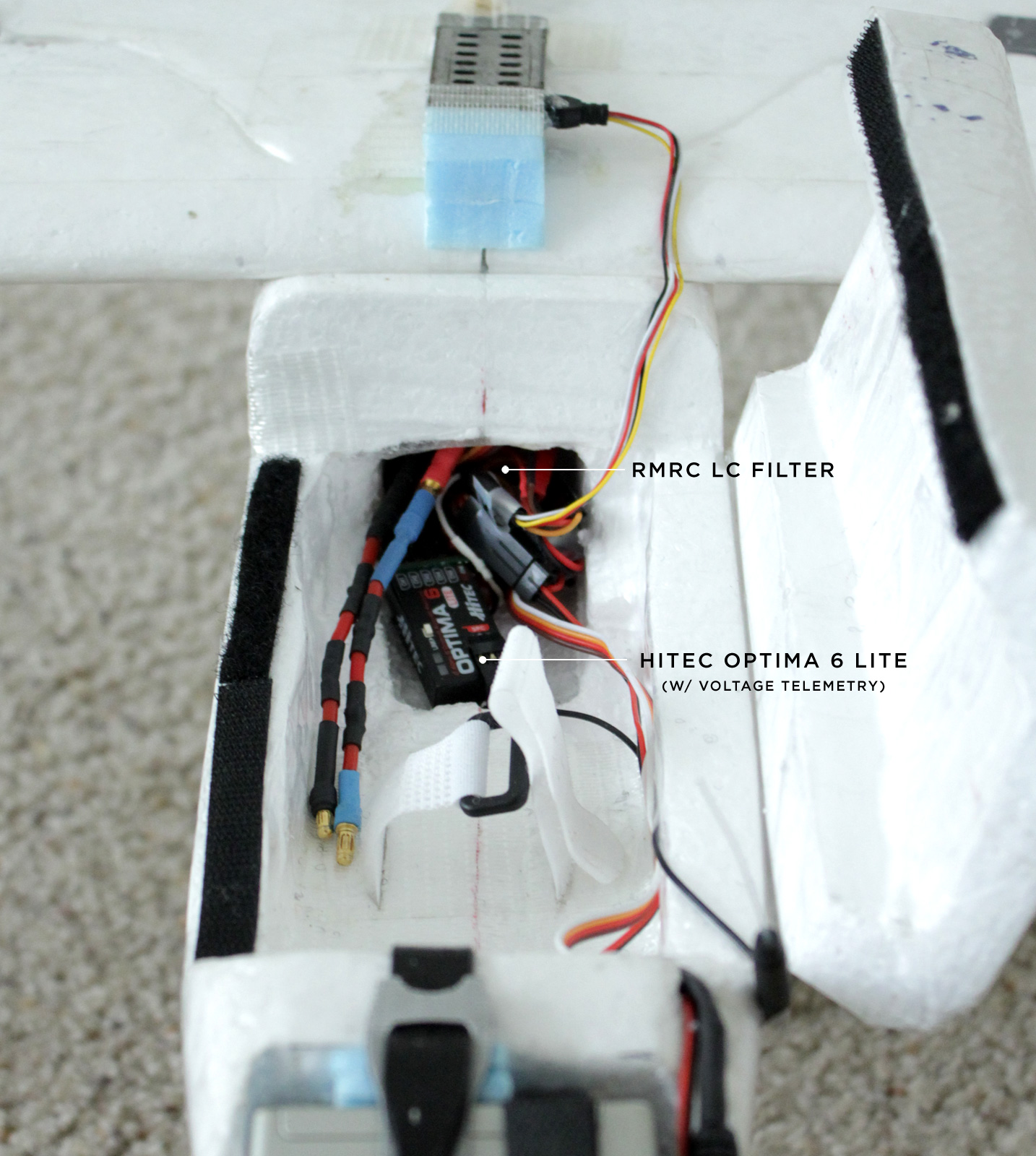
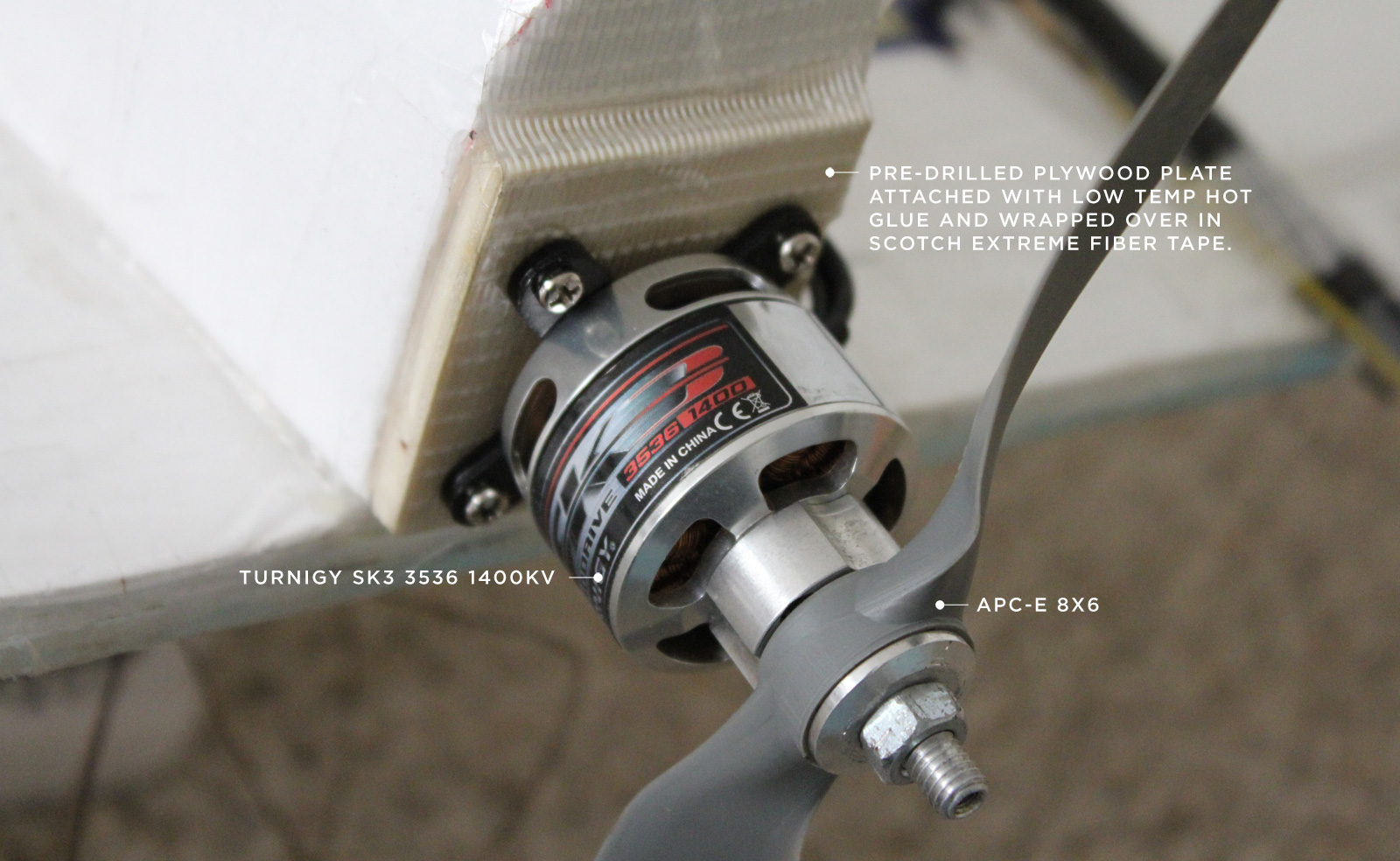
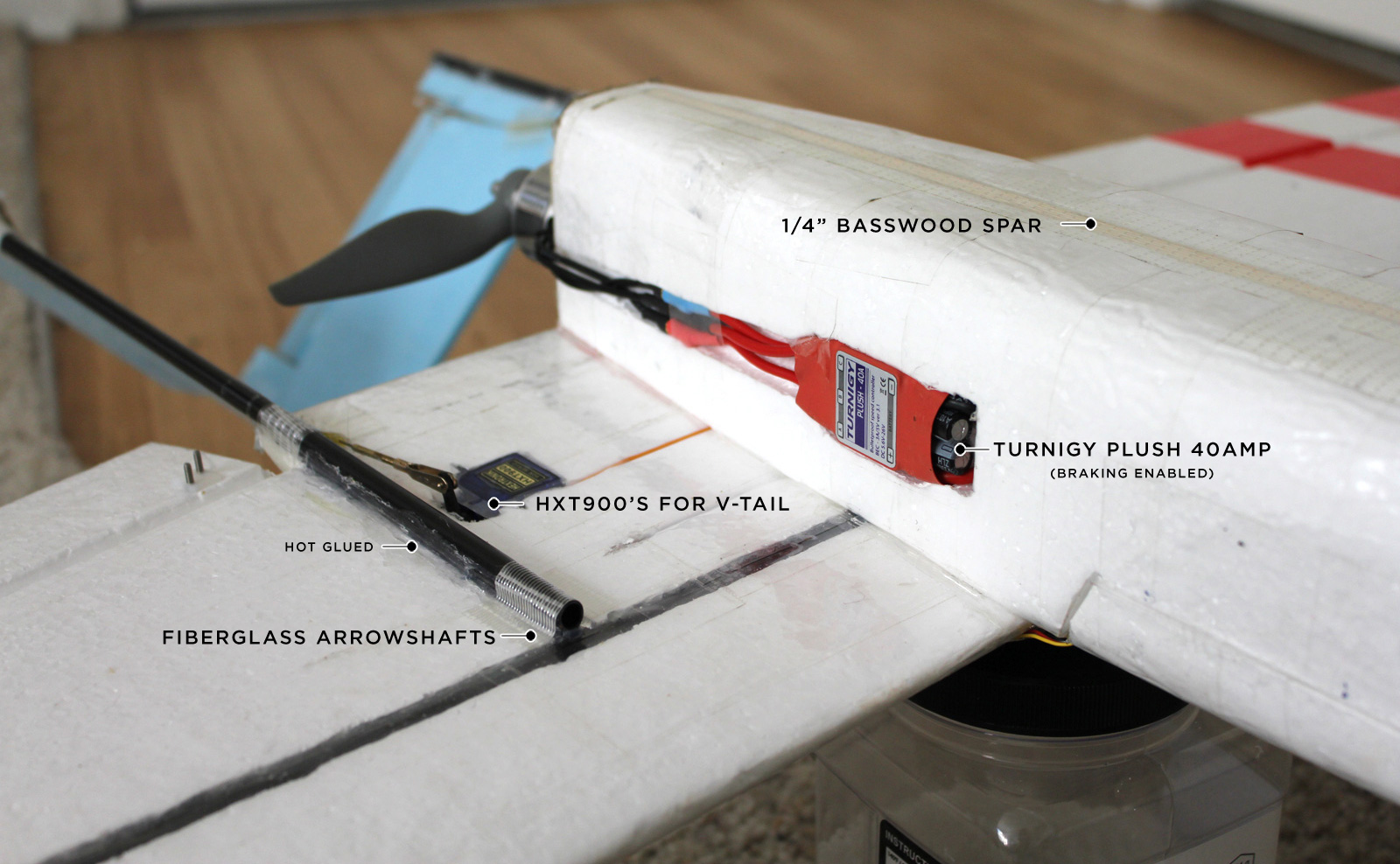
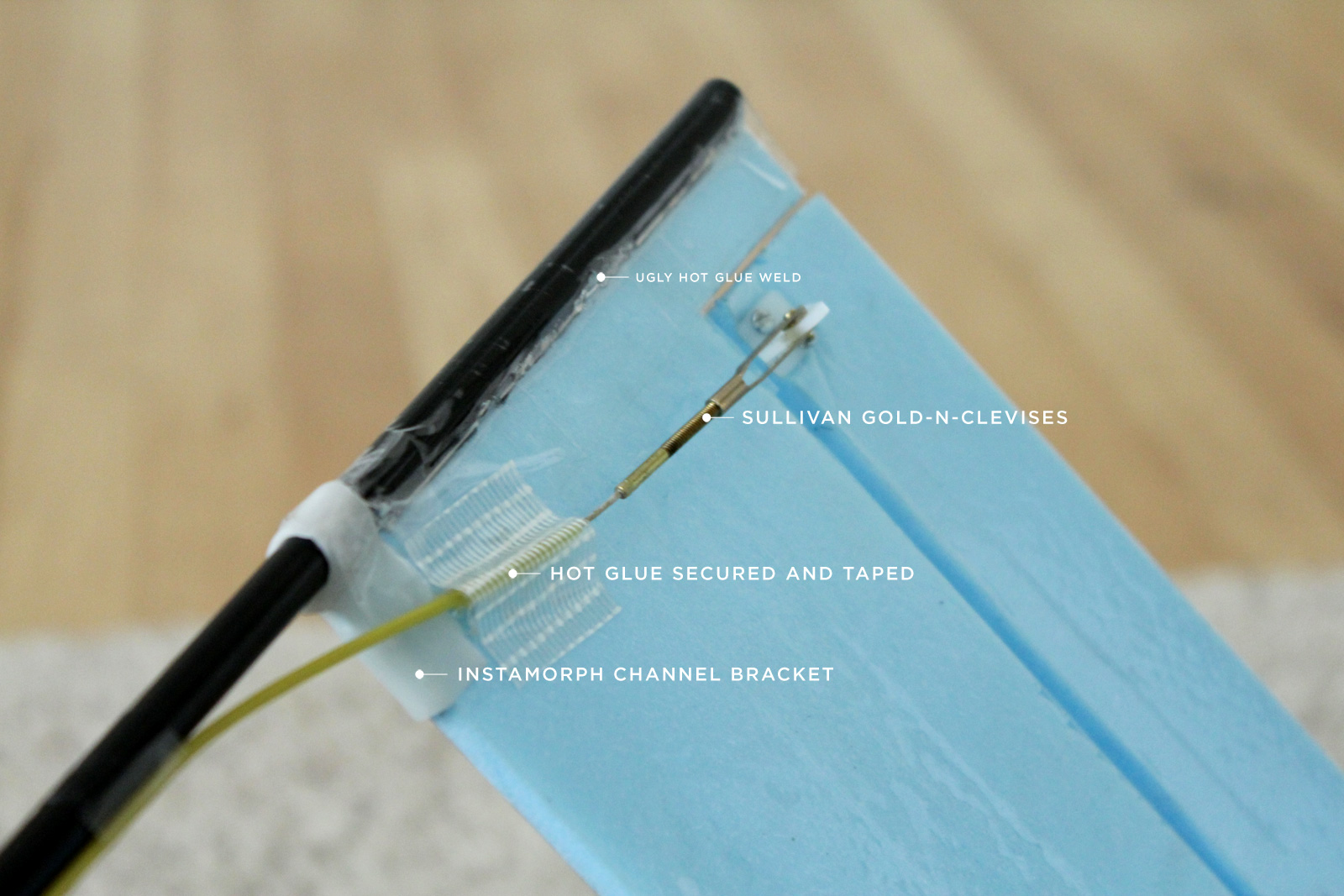
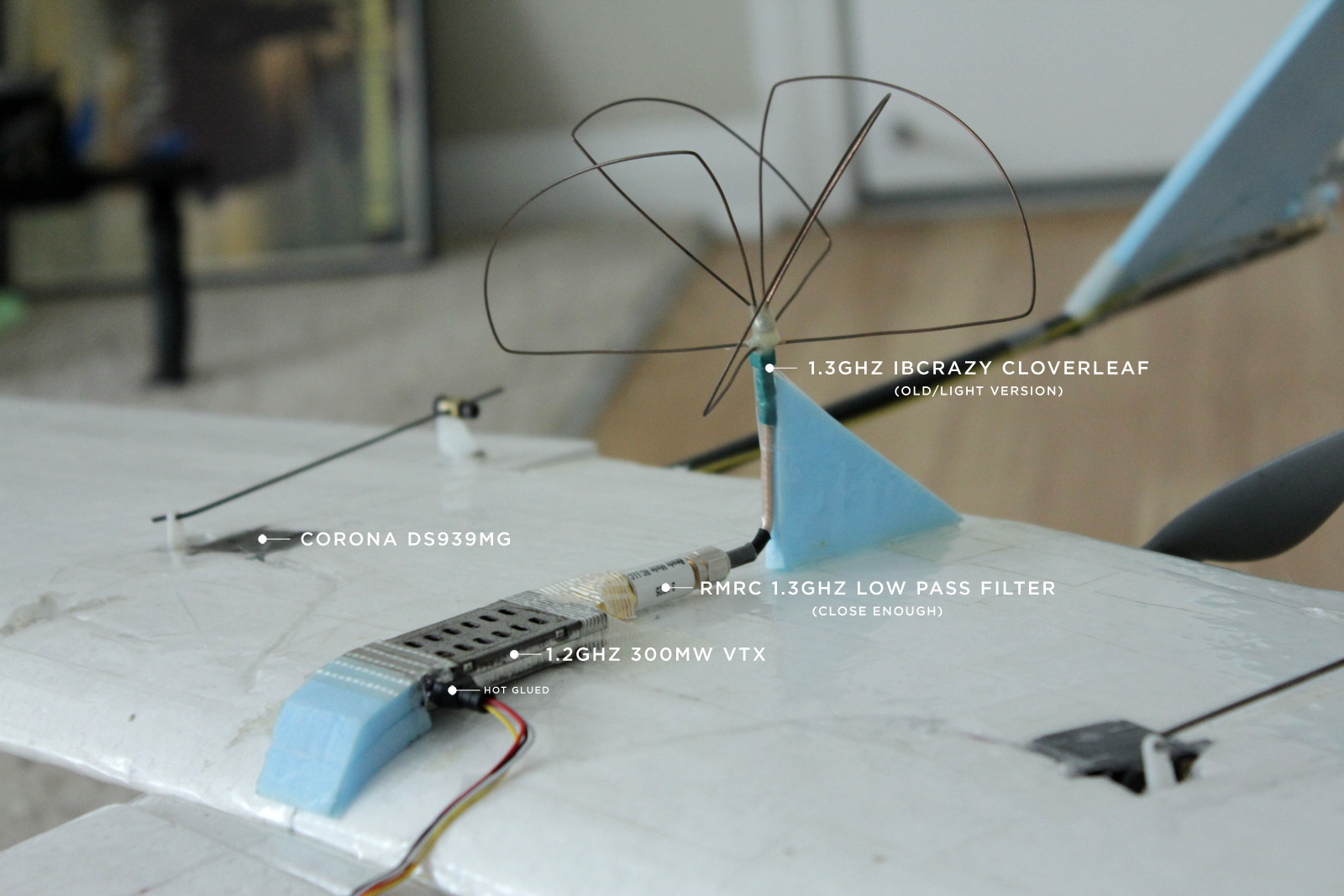
Here's some FPV practice footage from it side by side with footage from my friend's new twin engine fpv prototype under development:







Log In to reply
Log In to reply
Log In to reply
Log In to reply
But why to use a gopro as FPV cam?? that's is a nice search for problems...
And why to put a Filter in your VTX if you are flying with 2.4Ghz on control??
Have fun!!!
Log In to reply
The low pass filter on my VTX prevents the 1.2ghz signal from creating a harmonic on 2.4ghz. If you don't have a filter on your 1.2-1.3 system then it could/will interfere with your control signal and reduce your overall range. That's why most people like 5.8ghz because there's nothing above that frequency to interfere with your control over the craft.
Log In to reply
Great Plane!
Log In to reply
Log In to reply
Log In to reply
Log In to reply
Log In to reply
Log In to reply
Log In to reply
Log In to reply
Log In to reply
Keep your eyes open - I just finished a twin boom pusher using the FT Cruiser wing with the end goal of FPV. I'm in the process of making a build article.
Log In to reply
Log In to reply
Log In to reply